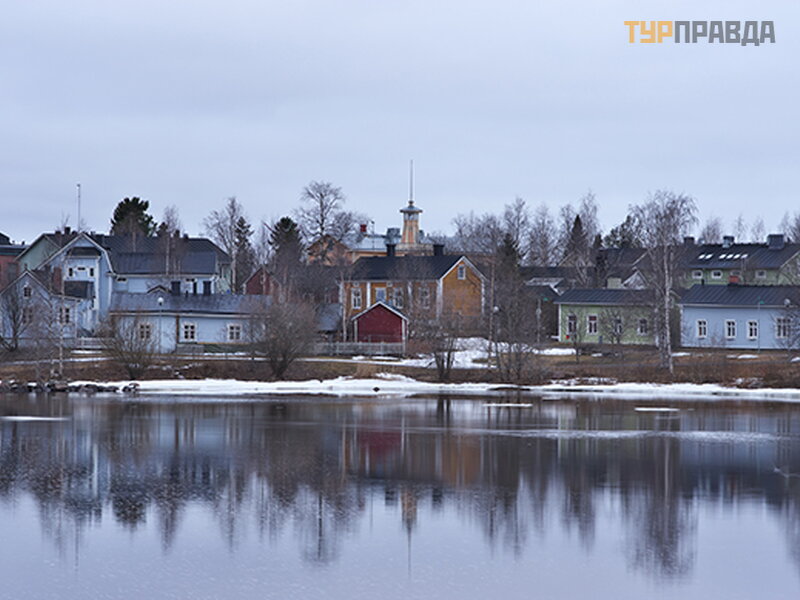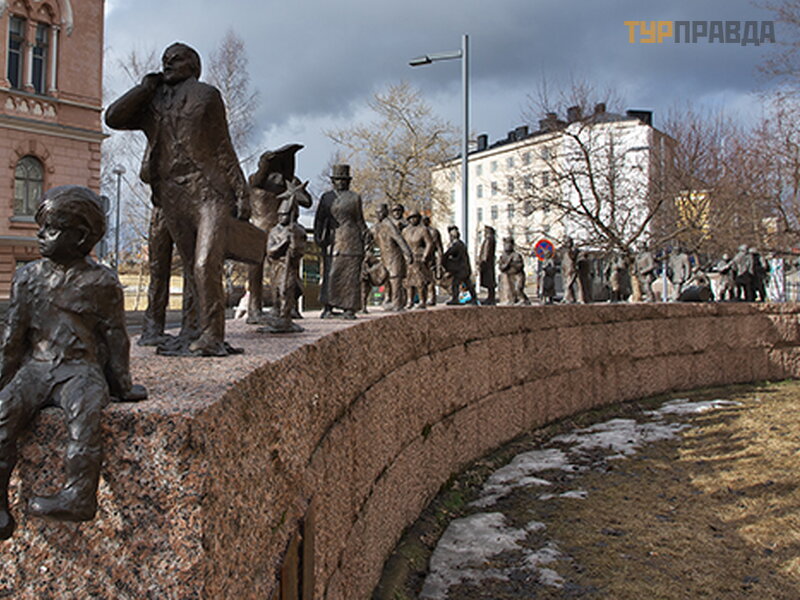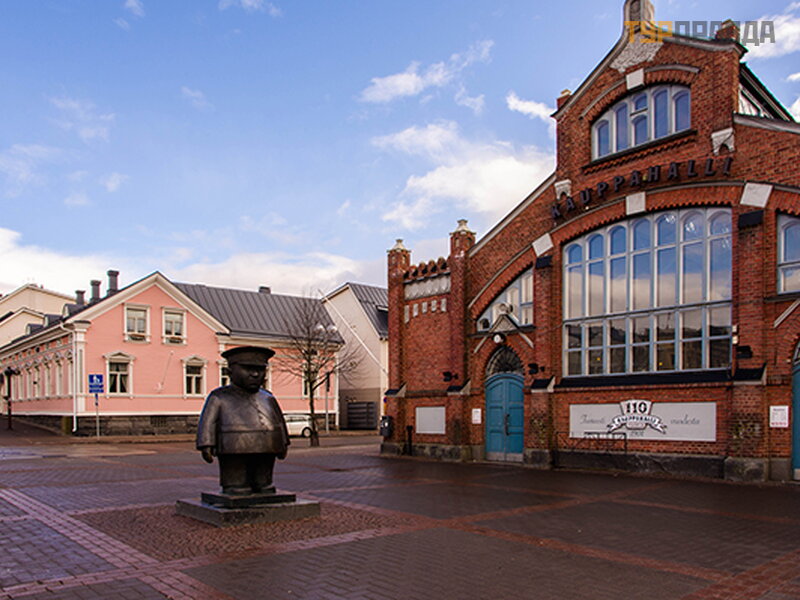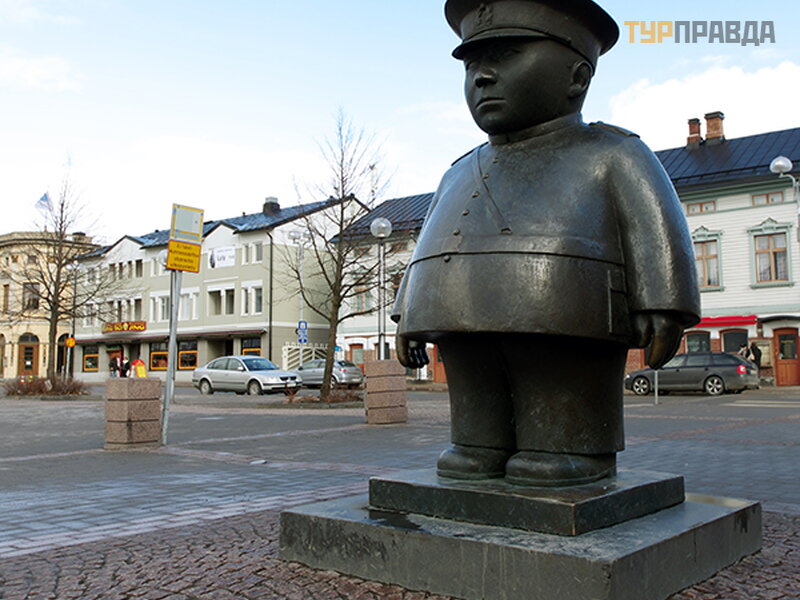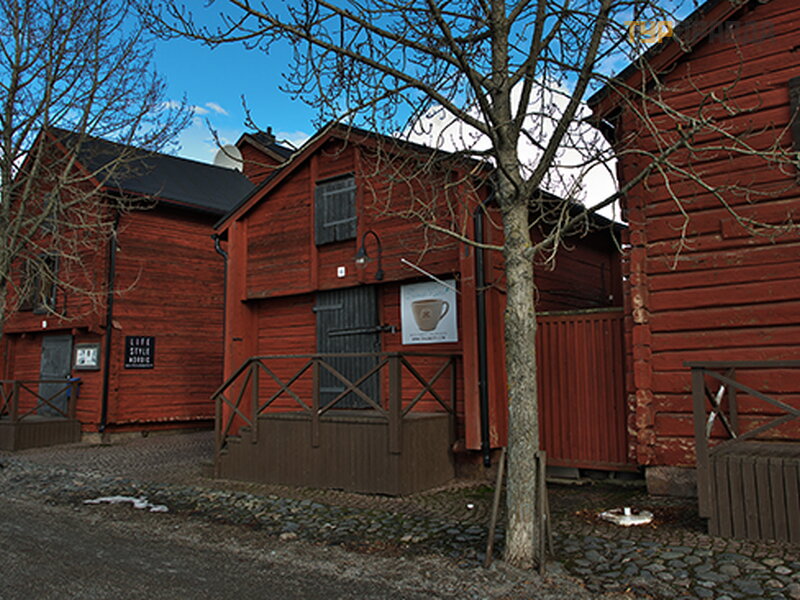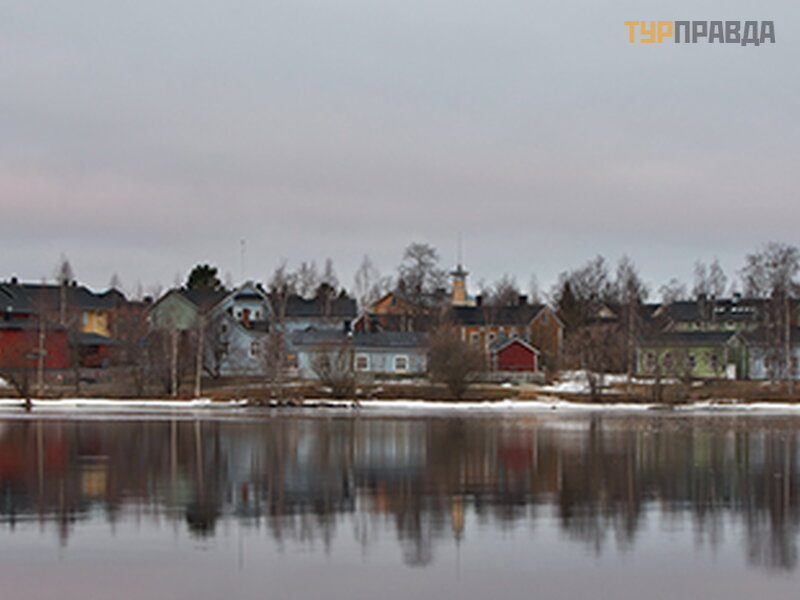Amazing stories of the city of Oulu
Each city is somewhat similar to the others, but each has its own unique stories. Sometimes you drive from the airport past the settlement, without even making a minute "halt", but there is an inexplicable desire to return to it once. So it was with the city of Oulu, located in the northern part of Finland on the shores of the Bontic Gulf. Returning there, not only did not regret it, but also learned many amazing stories.
What to give for the 400th anniversary? Since the best gift for a person is a book, then for a city it is a monument. Perhaps the Oulu Chamber of Commerce was guided by this principle, preparing a chic present for Oulu for its anniversary. The talented sculptor Sanna Koivisto was entrusted with making the generous gift. Of course, it was possible to sculpt the founder of the city or something abstract, having come up with a beautiful excuse for him.
However, Sanna realized an unusual and understandable idea for everyone, calling her creation "The Passage of Time". This phenomenon is symbolically conveyed in the form of a sequence of 32 small sculptures of people - typical citizens of Oulu in different time periods. And although the sculptures are not in chronological order, but this monument can be considered an "open book of history. " The sculpture of the Swedish King Charles IX begins the cavalcade. Why exactly him? Because according to his decree in 1605, Oulu was founded on the shores of the Gulf of Bothnia at the mouth of the Oulujoki River. It was rightfully and not without reason considered a tar city, the tar was burned along the banks of the river, and then brought to the settlement in barrels and transported further around the world. At that time, resin was widely used in shipbuilding, and in the 19th century Oulu became one of the first places in the world in its export. The profession of a tar barrel roller was the lowest paid, even women were engaged in it.
It is he who is personified by the representative of the weaker sex, rolling a barrel of resin. In one of the sculptures, it is easy to recognize a student who symbolizes the arrival of new technologies, because Oulu is famous for its university, one of the six largest in the country. The sequence ends with a sculpture of a seated boy. During the opening of this monument, one little girl from kindergarten age, looking at the sculpture, said - "Oh, this is Maarti. " "Why? ' they asked her. "Yes, he looks like my friend from kindergarten. " Since then, the townspeople have called it that. Of course, this boy has a symbolic meaning, because the sequence of sculptures of Charles IX, the founder of the city, begins, and ends with the figure of a little boy looking into the distance, because it depends on us what the future will be like. Citizens like "The passage of time", located near the city hall.
They love to come here, and an unknown resident knits warm clothes for Maarti every year. After that, pictures of the statue of a boy in warm clothes adorn the front pages of the local press.
The best way to breathe in the atmosphere of this city is just to walk along its streets, so you can spend the whole day. The Rotuaari pedestrian street is considered the epicenter of local life and the center of various events. One of the most original events is the World Imaginary Guitar Championship. It turns out that fans of this genre can be found in large numbers all over the world, so initially pre-selections are held in 16 countries. The participant must be able to have fun, create a character and choose a song with a duration of one minute. For a minute on stage, you will need to portray your best movements.
Perhaps that is why Oulu is famous not only for the export of resin in ancient times, the Nokia factory, it is rightfully considered the "Mecca" of air guitars. Walking along Rotuaari Street, you should definitely look into the shops, sit in a restaurant or cafe. The legendary establishment "Antell" is characterized by pronounced traditions. Its founder, Katri Antelli, came to Oulu over a hundred years ago with just one sack of flour. At home, she began to bake various buns and sell them in the marketplace. And today the most famous delicacy of "Antella" is a dessert in the form of an apple cake with vanilla sauce. A real delicacy in Oulu is salmon, which rises into the Oulujoki River. Not without reason, from the balconies of houses built in its delta according to the project of the master of Finnish design Alvar Aalto, you can catch this red fish. In addition to salmon, typical dishes of the local cuisine are northern berries and unleavened flatbread.
Rotuaari Street turns into Kauppurienkatu Street and continues all the way to the market square. The latter is considered a mega-popular pastime. Unlike most of her brothers, she faces the embankment. Fairs are still held here, for example, the Deer Carnival in February, the traditional autumn fair in September. Sometimes the most banal bazaar works, where sellers offer seasonal goods. The most colorful building of the square is the building of the covered market or, as the locals call it, Oulu's Market Rows. It was built of red brick and is over 110 years old. The covered market is a favorite place for philosophical gatherings of citizens over a cup of coffee. For those who want to have a snack, they can order morning rice porridge or soup for lunch.
Many travelers like to replenish their photo collections with pictures with representatives of law enforcement officers from different countries. Taking pictures with the Market Policeman has become a tradition for tourists visiting the capital of northern Finland. And that's why. In 1987, a monument to a policeman, or, as the locals say, a monument to fat Pekka, was erected on the market square of the city of Oulu. Why fat? Because a good-sized policeman was captured in bronze. Why Pekka? Yes, because it is one of the common Finnish names. From 1934 to 1979, three law enforcement officers maintained order and ensured the safety of citizens on this square. In memory of these law enforcement officers, this statue was erected. Although there are still rumors going around that, a long time ago, this policeman did live in Oulu, he was very fair and fat.
All the townspeople collected money for the monument, since 1985, mini-monuments of the policeman in the form of cakes and postcards were put on sale. Perhaps that is why "Fat Pekku" is considered by everyone to be the symbol of Oulu.
There is a local belief that in order for the Oulu police to be lenient, you need to hold on to the index finger of the right hand of Fat Pekka, and if you hold on to the index finger of the left hand, then the police throughout Finland will be very tolerant of you. Going for a walk to the market square, be sure to take your camera with you and do not forget to hold on to your index fingers. Those who want to bring a plaster figurine of a market policeman as a souvenir can buy it at the law enforcement information station.
But if you send a postcard or a letter, throwing it into the mailbox of the covered market, the addressee will receive your message, with the image of a market policeman on a stamp.
On the edge of the market square, there are original old barns. They are easily recognizable by their black roofs and red-painted wooden walls. These buildings are reminiscent of the history of navigation and trade. Now they house original shops that offer original souvenirs for different tastes, as well as restaurants. You can try a variety of savory and sweet Finnish pancakes at the Pancake House, which is also located in one of these old barns.
Besides, Oulu is also endless summer days, when the sun does not set below the horizon until dawn.
The city is also recognized as the best settlement for cyclists in the country. Here you can meet the townspeople on "two-wheeled horses" even in winter.
